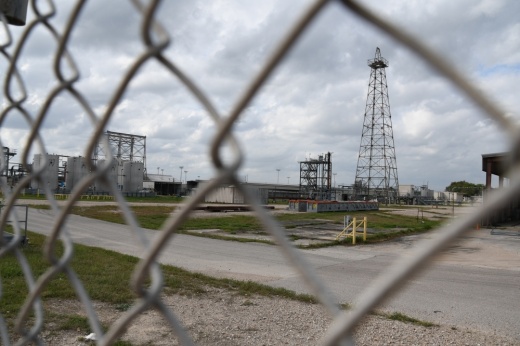Brays Oaks Management District—one of 53 management districts in the Greater Houston area that encourages economic development—has started to lead the master-planning process for a portion of the former Shell Gasmer Technology Center site. Another portion of the 29-acre site, meanwhile, will house Levitt Pavilion Houston, and will be managed by the nonprofit Friends of Levitt Pavilion Houston, which will help produce an annual series of free professional concerts.
“The Brays Oaks Management District is very interested in the opportunity that Levitt Pavilion offers for economic revitalization, which is a key part of their mission,” said Howard Sacks, the chair of Friends of Levitt Pavilion Houston.
In September, the management district announced that Austin-based firm Lionheart—a planning, urban design and landscape architecture company—would work on the master plan. The master planning will focus on concepts for buildings, landscaping and engineering, officials said.
Out of the total Gasmer property at 5521 Gasmer Drive, 3 acres are selected for Levitt Pavilion with space for 5,000 attendees to congregate. What remains unclear is how much of the remaining 26 acres will be used for stormwater detention and how much the city of Houston will leave to Levitt Pavilion Houston for other amenities, Sacks said.
That remaining land is what Lionheart is now planning.
“You could repurpose existing structures,” Sacks said. “For example, you could take the 10,000-square-foot [administration] building on the far north end facing Gasmer and repurpose it as a Levitt and Willow Waterhole Greenway Visitor Center. ... You could take the 100-foot Spindletop-like oil derrick or the 120-foot gantry crane and integrate those into the new campus.”
The 3 acres for use by Levitt Pavilion are being designed by Houston-based Studio RED Architects, whose designs will be further refined pending feedback from the master-planning process, Sacks said.
Besides repurposing buildings and structures, the master plan will also integrate with Willow Waterhole Greenway, a 280-acre development in the Westbury area offering recreational space and flood mitigation, which lies adjacent.
“The grand design is that, when that Shell property gets rebuilt with Levitt Pavilion, it’s going to feel like a seamless transition between the park and that property,” said Bill Burhans, president of the Willow Waterhole Greenspace Conservancy.
Looking forward
To pay for the master plan’s design work, Friends of Levitt Pavilion Houston is more than halfway to its goal of raising $100,000, Sacks said.
Meanwhile, the design work from Lionheart is expected to take the next few months. During that time frame, residents will have the opportunity to provide input during two upcoming community meetings, though dates have not been selected.
With input from residents, the master-planning process will determine the price tag for construction, Sacks said.
Following that will be a 12- to 18-month capital campaign to raise those funds, Sacks said. The best case would be to launch a capital campaign by mid-2022, though that time frame may change, he said.
Meanwhile, because the original lease agreement—among Friends of Levitt Pavilion Houston, the city of Houston and the Levitt Foundation—targeted a pavilion location adjacent to South Post Oak Boulevard when drafted, that agreement still needs to be revised to name the venue as well as the responsibilities of each party.
The shift to the new location came after Harris County Commissioners Court approved in February 2018 a $870,000 study exploring the feasibility of extending Fort Bend Tollway to connect with the southwest corner of Loop 610. Going forward with that extension would have brought the tollway straight through the Westbury neighborhood as well as over the Willow Waterhole Greenway.
After significant resident pushback from the Westbury neighborhood, the Harris County Commissioners Court ended up voting unanimously on Sept. 29, 2020, to completely ax any future study of a toll road extension. However, the change in site plans for Levitt Pavilion Houston had by that point already gone into effect, Sacks said.
“After considerable conceptual work toward building Levitt Pavilion Houston there [at the old location], we had no choice, but to abandon the site and look elsewhere,” Sacks wrote in an email to Community Impact Newspaper.
Construction is estimated to take one year after the completion of the capital campaign.
Once construction is completed, the new Levitt Pavilion site would be run through partnerships among three separate entities: Friends of Levitt Pavilion Houston, Levitt Foundation and the city of Houston.
Friends of Levitt Pavilion Houston would manage the venue year-round, with the city of Houston, as well as produce 50 free, professional concerts across a variety of music genres.
While the city of Houston would be responsible for ongoing maintenance of the facility, the Levitt Foundation would provide seed funding and annual operating grants, as well as support and technical assistance, according to the Levitt Pavilion Houston website.





